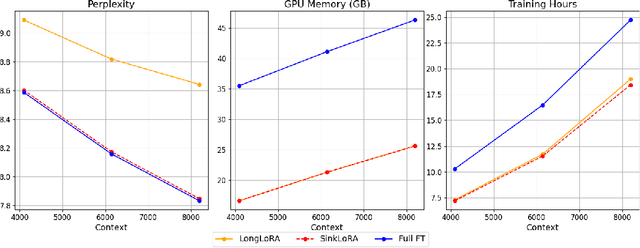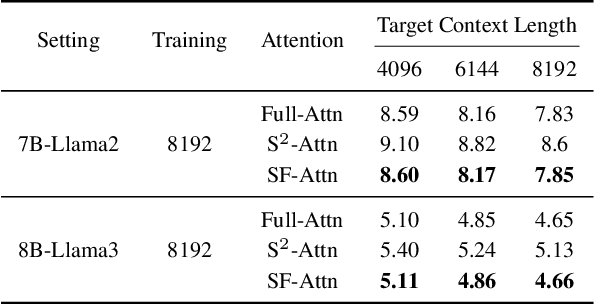Hengyu Zhang
Beamforming-Codebook-Aware Channel Knowledge Map Construction for Multi-Antenna Systems
May 22, 2025Abstract:Channel knowledge map (CKM) has emerged as a crucial technology for next-generation communication, enabling the construction of high-fidelity mappings between spatial environments and channel parameters via electromagnetic information analysis. Traditional CKM construction methods like ray tracing are computationally intensive. Recent studies utilizing neural networks (NNs) have achieved efficient CKM generation with reduced computational complexity and real-time processing capabilities. Nevertheless, existing research predominantly focuses on single-antenna systems, failing to address the beamforming requirements inherent to MIMO configurations. Given that appropriate precoding vector selection in MIMO systems can substantially enhance user communication rates, this paper presents a TransUNet-based framework for constructing CKM, which effectively incorporates discrete Fourier transform (DFT) precoding vectors. The proposed architecture combines a UNet backbone for multiscale feature extraction with a Transformer module to capture global dependencies among encoded linear vectors. Experimental results demonstrate that the proposed method outperforms state-of-the-art (SOTA) deep learning (DL) approaches, yielding a 17\% improvement in RMSE compared to RadioWNet. The code is publicly accessible at https://github.com/github-whh/TransUNet.
Adaptive Coordinators and Prompts on Heterogeneous Graphs for Cross-Domain Recommendations
Oct 15, 2024



Abstract:In the online digital world, users frequently engage with diverse items across multiple domains (e.g., e-commerce platforms, streaming services, and social media networks), forming complex heterogeneous interaction graphs. Leveraging this multi-domain information can undoubtedly enhance the performance of recommendation systems by providing more comprehensive user insights and alleviating data sparsity in individual domains. However, integrating multi-domain knowledge for the cross-domain recommendation is very hard due to inherent disparities in user behavior and item characteristics and the risk of negative transfer, where irrelevant or conflicting information from the source domains adversely impacts the target domain's performance. To address these challenges, we offer HAGO, a novel framework with $\textbf{H}$eterogeneous $\textbf{A}$daptive $\textbf{G}$raph co$\textbf{O}$rdinators, which dynamically integrate multi-domain graphs into a cohesive structure by adaptively adjusting the connections between coordinators and multi-domain graph nodes, thereby enhancing beneficial inter-domain interactions while mitigating negative transfer effects. Additionally, we develop a universal multi-domain graph pre-training strategy alongside HAGO to collaboratively learn high-quality node representations across domains. To effectively transfer the learned multi-domain knowledge to the target domain, we design an effective graph prompting method, which incorporates pre-trained embeddings with learnable prompts for the recommendation task. Our framework is compatible with various graph-based models and pre-training techniques, demonstrating broad applicability and effectiveness. Further experimental results show that our solutions outperform state-of-the-art methods in multi-domain recommendation scenarios and highlight their potential for real-world applications.
Moyun: A Diffusion-Based Model for Style-Specific Chinese Calligraphy Generation
Oct 10, 2024



Abstract:Although Chinese calligraphy generation has achieved style transfer, generating calligraphy by specifying the calligrapher, font, and character style remains challenging. To address this, we propose a new Chinese calligraphy generation model 'Moyun' , which replaces the Unet in the Diffusion model with Vision Mamba and introduces the TripleLabel control mechanism to achieve controllable calligraphy generation. The model was tested on our large-scale dataset 'Mobao' of over 1.9 million images, and the results demonstrate that 'Moyun' can effectively control the generation process and produce calligraphy in the specified style. Even for calligraphy the calligrapher has not written, 'Moyun' can generate calligraphy that matches the style of the calligrapher.
Universal Modem Generation with Inherent Adaptability to Variant Underwater Acoustic Channels: a Data-Driven Perspective
Sep 21, 2024



Abstract:In underwater acoustic (UWA) communication, orthogonal frequency division multiplexing (OFDM) is commonly employed to mitigate the inter-symbol interference (ISI) caused by delay spread. However, path-specific Doppler effects in UWA channels could result in significant inter-carrier interference (ICI) in the OFDM system. To address this problem, we introduce a multi-resolution convolutional neural network (CNN) named UWAModNet in this paper, designed to optimize the modem structure, specifically modulation and demodulation matrices. Based on a trade-off between the minimum and the average equivalent sub-channel rate, we propose an optimization criterion suitable to evaluate the performance of our learned modem. Additionally, a two-stage training strategy is developed to achieve quasi-optimal results. Simulations indicate that the learned modem outperforms zero-padded OFDM (ZP-OFDM) in terms of equivalent sub-channel rate and bit error rate, even under more severe Doppler effects during testing compared to training.
SinkLoRA: Enhanced Efficiency and Chat Capabilities for Long-Context Large Language Models
Jun 09, 2024



Abstract:Extending the functionality of the Transformer model to accommodate longer sequence lengths has become a critical challenge. This extension is crucial not only for improving tasks such as language translation and long-context processing but also for enabling novel applications like chatbots, code generation, and multimedia content creation. The primary obstacle is the self-attention mechanism, which scales quadratically with sequence length in terms of computation time and memory requirements. LongLoRA proposed shifted sparse attention (S\(^2\)-Attn), effectively enabling context extension and leading to non-trivial computation savings with similar performance to fine-tuning with vanilla attention. However, LongLoRA is still not as efficient as vanilla attention, reaching only 39\% of the perplexity improvement compared to full attention. This inefficiency is due to the cyclic shift applied within different attention head patterns, causing either chaos in the attention head structure or unnecessary information exchange between token groups. To address these issues, We propose \textbf{SinkLoRA}, which features better work partitioning. Specifically, (1) we developed SF-Attn with a segmentation and reassembly algorithm to proportionally return cyclically shifted groups of attention heads to their un-shifted state together with global attention of "sink attention tokens", achieving 92\% of the perplexity improvement compared to full attention after fine tuning, and (2) applied a SOTA KV cache compression algorithm H$_2$O to accelerate inference. Furthermore, We conducted supervised fine-tuning with SinkLoRA using a self collected LongAlpaca-plus dataset. All our code, models, datasets, and demos are available at \url{https://github.com/Dexter-GT-86/SinkLoRA}.
Deep Pattern Network for Click-Through Rate Prediction
Apr 17, 2024Abstract:Click-through rate (CTR) prediction tasks play a pivotal role in real-world applications, particularly in recommendation systems and online advertising. A significant research branch in this domain focuses on user behavior modeling. Current research predominantly centers on modeling co-occurrence relationships between the target item and items previously interacted with by users in their historical data. However, this focus neglects the intricate modeling of user behavior patterns. In reality, the abundance of user interaction records encompasses diverse behavior patterns, indicative of a spectrum of habitual paradigms. These patterns harbor substantial potential to significantly enhance CTR prediction performance. To harness the informational potential within user behavior patterns, we extend Target Attention (TA) to Target Pattern Attention (TPA) to model pattern-level dependencies. Furthermore, three critical challenges demand attention: the inclusion of unrelated items within behavior patterns, data sparsity in behavior patterns, and computational complexity arising from numerous patterns. To address these challenges, we introduce the Deep Pattern Network (DPN), designed to comprehensively leverage information from user behavior patterns. DPN efficiently retrieves target-related user behavior patterns using a target-aware attention mechanism. Additionally, it contributes to refining user behavior patterns through a pre-training paradigm based on self-supervised learning while promoting dependency learning within sparse patterns. Our comprehensive experiments, conducted across three public datasets, substantiate the superior performance and broad compatibility of DPN.
Modem Optimization of High-Mobility Scenarios: A Deep-Learning-Inspired Approach
Mar 21, 2024



Abstract:The next generation wireless communication networks are required to support high-mobility scenarios, such as reliable data transmission for high-speed railways. Nevertheless, widely utilized multi-carrier modulation, the orthogonal frequency division multiplex (OFDM), cannot deal with the severe Doppler spread brought by high mobility. To address this problem, some new modulation schemes, e.g. orthogonal time frequency space and affine frequency division multiplexing, have been proposed with different design criteria from OFDM, which promote reliability with the cost of extremely high implementation complexity. On the other hand, end-to-end systems achieve excellent gains by exploiting neural networks to replace traditional transmitters and receivers, but have to retrain and update continually with channel varying. In this paper, we propose the Modem Network (ModNet) to design a novel modem scheme. Compared with end-to-end systems, channels are directly fed into the network and we can directly get a modem scheme through ModNet. Then, the Tri-Phase training strategy is proposed, which mainly utilizes the siamese structure to unify the learned modem scheme without retraining frequently faced up with time-varying channels. Simulation results show the proposed modem scheme outperforms OFDM systems under different highmobility channel statistics.
Time-aligned Exposure-enhanced Model for Click-Through Rate Prediction
Aug 19, 2023



Abstract:Click-Through Rate (CTR) prediction, crucial in applications like recommender systems and online advertising, involves ranking items based on the likelihood of user clicks. User behavior sequence modeling has marked progress in CTR prediction, which extracts users' latent interests from their historical behavior sequences to facilitate accurate CTR prediction. Recent research explores using implicit feedback sequences, like unclicked records, to extract diverse user interests. However, these methods encounter key challenges: 1) temporal misalignment due to disparate sequence time ranges and 2) the lack of fine-grained interaction among feedback sequences. To address these challenges, we propose a novel framework called TEM4CTR, which ensures temporal alignment among sequences while leveraging auxiliary feedback information to enhance click behavior at the item level through a representation projection mechanism. Moreover, this projection-based information transfer module can effectively alleviate the negative impact of irrelevant or even potentially detrimental components of the auxiliary feedback information on the learning process of click behavior. Comprehensive experiments on public and industrial datasets confirm the superiority and effectiveness of TEM4CTR, showcasing the significance of temporal alignment in multi-feedback modeling.
Parallel Knowledge Enhancement based Framework for Multi-behavior Recommendation
Aug 09, 2023Abstract:Multi-behavior recommendation algorithms aim to leverage the multiplex interactions between users and items to learn users' latent preferences. Recent multi-behavior recommendation frameworks contain two steps: fusion and prediction. In the fusion step, advanced neural networks are used to model the hierarchical correlations between user behaviors. In the prediction step, multiple signals are utilized to jointly optimize the model with a multi-task learning (MTL) paradigm. However, recent approaches have not addressed the issue caused by imbalanced data distribution in the fusion step, resulting in the learned relationships being dominated by high-frequency behaviors. In the prediction step, the existing methods use a gate mechanism to directly aggregate expert information generated by coupling input, leading to negative information transfer. To tackle these issues, we propose a Parallel Knowledge Enhancement Framework (PKEF) for multi-behavior recommendation. Specifically, we enhance the hierarchical information propagation in the fusion step using parallel knowledge (PKF). Meanwhile, in the prediction step, we decouple the representations to generate expert information and introduce a projection mechanism during aggregation to eliminate gradient conflicts and alleviate negative transfer (PME). We conduct comprehensive experiments on three real-world datasets to validate the effectiveness of our model. The results further demonstrate the rationality and effectiveness of the designed PKF and PME modules. The source code and datasets are available at https://github.com/MC-CV/PKEF.
Data Augmentation of Bridging the Delay Gap for DL-based Massive MIMO CSI Feedback
Aug 01, 2023Abstract:In massive multiple-input multiple-output (MIMO) systems under the frequency division duplexing (FDD) mode, the user equipment (UE) needs to feed channel state information (CSI) back to the base station (BS). Though deep learning approaches have made a hit in the CSI feedback problem, whether they can remain excellent in actual environments needs to be further investigated. In this letter, we point out that the real-time dataset in application often has the domain gap from the training dataset caused by the time delay. To bridge the gap, we propose bubble-shift (B-S) data augmentation, which attempts to offset performance degradation by changing the delay and remaining the channel information as much as possible. Moreover, random-generation (R-G) data augmentation is especially proposed for outdoor scenarios due to the complex distribution of its channels. It generalizes the characteristics of the channel matrix and alleviates the over-fitting problem. Simulation results show that the proposed data augmentation boosts the robustness of networks in both indoor and outdoor environments. The open source codes are available at https://github.com/zhanghy23/CRNet-Aug.
 Add to Chrome
Add to Chrome Add to Firefox
Add to Firefox Add to Edge
Add to Edge